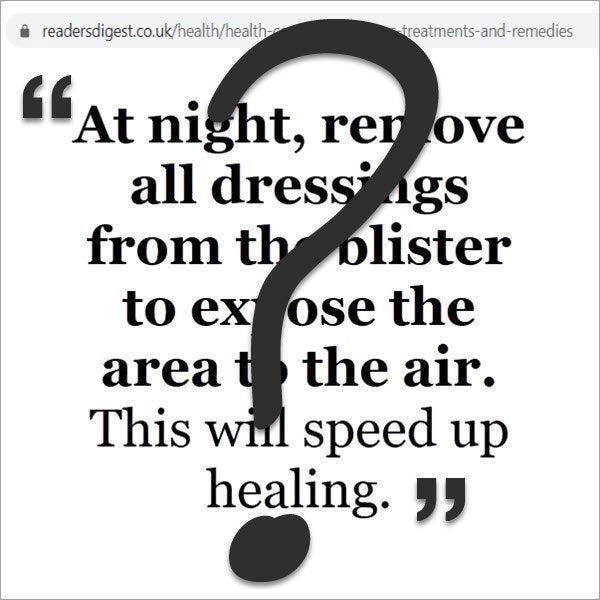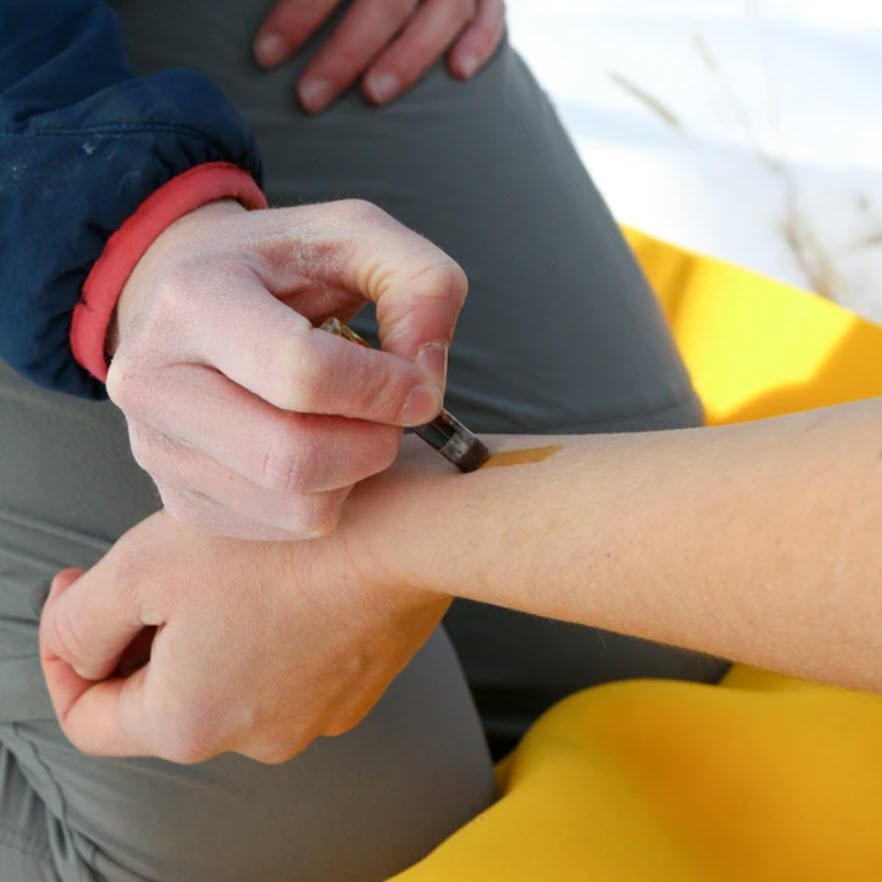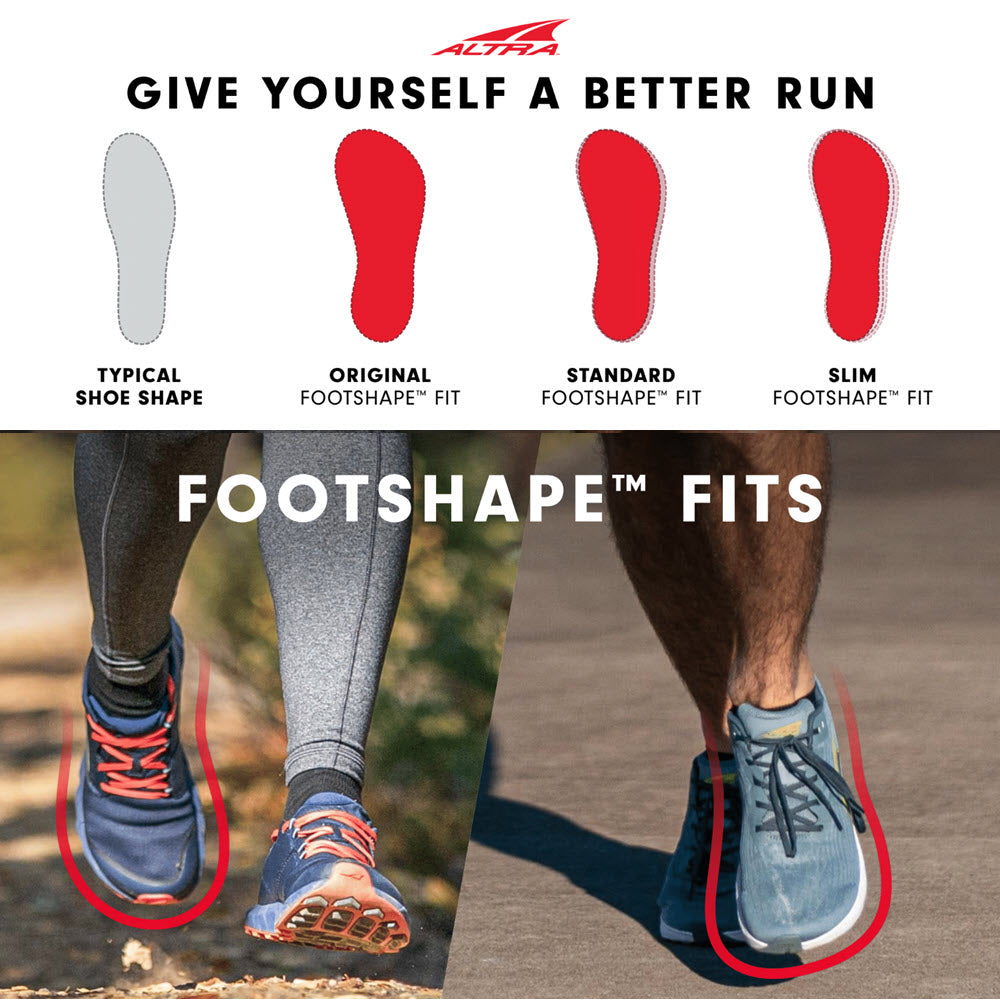There's a lot of advice saying leave it open.




The Claim: Your Blister Needs Air To Help It Dry Out and Heal Faster
It's incorrect.
To understand why opening your blister up to the air to dry out is either counterproductive or inconsequential, you must remember there are three types of blisters, and address them separately. So let's do just that.
1) Deroofed Blisters
In an insightful article titled Clearing The Air About Moist Vs. Dry Wound Healing, Bruce Ruben MD discusses the role of exudate in wound healing. For example, deroofed blisters - where the roof has disappeared and you're left with a weepy raw blister base. Here's what he has to say:
“In this environment, the wound exudate, the moisture that naturally seeps out from a wound site, serves as a transport vehicle for a variety of bioactive molecules such as enzymes, growth factors and hormones. The different cells in the wound area communicate with each other via these mediators, ensuring that the healing processes proceed in a coordinated manner.
Wound exudate also provides the different cells of the immune system with an ideal medium to destroy invading pathogens such as bacteria, foreign bodies and necrotic tissues, diminishing the rate of infection.
Moist wound healing inhibits the formation of a solid, impenetrable scab, which tends to block the epithelial cells from spreading horizontally through the thin layer of wound exudate and across the wound bed. The wound is then able to close quickly. In addition, pain is significantly reduced when wounds are covered with an occlusive dressing. At first, there were concerns that the presence of moisture in wounds would increase the risk of clinical infection, but that has been shown not to be the case.
Following this protocol provides:
- Up to 50% faster wound healing than dry wound healing
- A lower rate of infection
- No need of systemic antibiotics
- Painless removal of the dressing without damaging newly formed tissue
- Less scarring and better cosmetic results”
So, most definitely, don’t let the air get to your deroofed blister and allow a scab to form. Put an island dressing on it at a minimum. Or even better, a hydrocolloid dressing. This will facilitate and accelerate the healing process.
2) Torn Blisters
No, don’t leave this one open either. Leave what remains of the blister roof over the raw blister base (once you’ve cleaned it and got any dirt out) and place an island dressing over it. The remaining skin plus the dressing will create a moist wound environment to facilitate the healing process. Change the dressing when strike-through occurs. Strike-through is when the island first shows signs of becoming saturated. Remember, you don't want a saturated dressing in contact with your skin for an extended period.
3) Intact Blisters
This one doesn’t technically need anything done to it (do put an island dressing on it if it needs a little physical protection from your shoe or your activity). But the assertation that leaving it open to the air will allow the blister fluid to reabsorb quicker or evaporate through the blister roof is nonsense. It will make no difference.
👉 Learn more about how to treat blisters properly
When Should Your Blister Be Exposed To The Air To Dry Out?
If it gets macerated! Macerated means soggy - you know like when you spend too long in the bath or at the pool. Maceration and blisters are two different things, but they can happen together. I’ve written at length about maceration here.
The most common macerated blister situations arise from:
- Continuing to run or hike in waterlogged shoes and socks
- Neglecting to change your blister dressing often enough and the surrounding skin becomes white and wrinkly
In these situations, it’s not so much the blister that needs drying out but more the surrounding skin. Don’t leave it open too long. Better to just change your dressings a little more frequently to encourage the skin around your blister to dry out.
👉 Learn more about the different aims of blister treatment according to the integrity of the blister roof - watch the video below.
Wrapping Up
If you ever wonder should your blister be exposed to the air, remember this. Leaving your blister open to the air to dry out and scab over is either counterproductive to healing (deroofed and torn blisters) or inconsequential (intact blisters). It is certainly not beneficial to any blister, only maceration.
If, however, you're wanting to lance your blister, the gear you need is in the Blister Kits - Blister Lance Pack.








